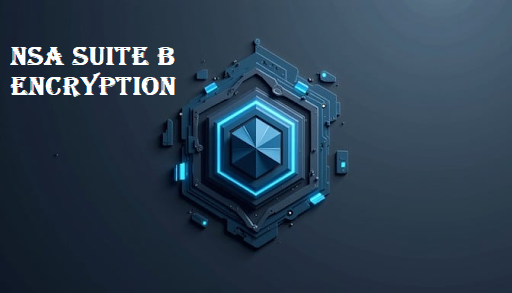Legacy Standards, Algorithms, and the Transition to CNSA 2.0
In the modern cybersecurity landscape, where data breaches and quantum threats are on the rise, encryption plays a critical role in protecting sensitive information. One significant standard in this field is NSA Suite B Encryption—a set of cryptographic algorithms developed by the National Security Agency (NSA) to safeguard both classified and unclassified data.
Although NSA Suite B has been officially phased out and replaced by the Commercial National Security Algorithm (CNSA) Suite, its influence continues across legacy systems and various industries. In this guide, we’ll explore NSA Suite B encryption, its key components, use cases, the transition to CNSA, and what organizations must know to secure their systems today and into the future.
What Is NSA Suite B Encryption?
NSA Suite B Encryption was introduced by the NSA in 2005 as part of a strategy to standardize secure encryption for both classified and unclassified communications. It consists of publicly known cryptographic algorithms chosen for their strength, efficiency, and interoperability across government and commercial platforms.
Key Goals of NSA Suite B:
- Enable secure communication between systems using standardized, publicly available algorithms
- Provide compact key sizes for resource-constrained environments
- Ensure compliance with FIPS 140-2 and CNSSP-15 policies
NSA Suite B Algorithms and Standards
NSA Suite B uses a set of robust algorithms for encryption, digital signatures, hashing, and key exchange:
| Algorithm | Purpose | Secret Level | Top Secret Level |
| AES (Advanced Encryption Standard) | Symmetric encryption | 128-bit keys | 256-bit keys |
| ECDH (Elliptic Curve Diffie-Hellman) | Key exchange | 256-bit curves | 384-bit curves |
| ECDSA (Elliptic Curve Digital Signature Algorithm) | Digital signature | 256-bit curves | 384-bit curves |
| SHA-2 (Secure Hash Algorithm) | Hashing & integrity | SHA-256 | SHA-384 |
Suite B and TLS Profiles
NSA Suite B defines two main profiles for Transport Layer Security (TLS):
- Suite B-compliant Profile (TLS 1.2): Uses only Suite B algorithms (AES, ECDH, ECDSA, SHA-256/384)
- Transitional Profile (TLS 1.0/1.1): Allows compatibility with older, non-Suite B systems during migration
Example: IBM® MQ supports the Suite B profile using TLS 1.2 across AIX®, Linux®, and Windows®, emphasizing compliance in secure enterprise messaging.
Real-World Applications of NSA Suite B
NSA Suite B has been widely adopted across various sectors:
- Government Agencies: Encryption of classified and sensitive communications
- Healthcare: Secure patient data and compliance with HIPAA regulations
- Finance: Protection of account details, credit card numbers, and secure transactions
- Mobile & IoT Devices: Efficient encryption with minimal resource use
- Military: Secure battlefield communication and mission-critical data protection
Transition to CNSA: Future-Proofing Encryption
With the advancement of quantum computing, NSA Suite B is no longer sufficient for long-term protection. In 2018, the Commercial National Security Algorithm Suite (CNSA) replaced Suite B to address these emerging threats.
CNSA Implementation Deadlines:
- By Jan 1, 2027: New equipment must be CNSA 2.0-compliant
- By Dec 31, 2030: Non-compliant equipment must be retired
- By Dec 31, 2031: Full CNSA 2.0 adoption is mandatory
CNSA 2.0: Quantum-Resistant Encryption Standards
CNSA 2.0 introduces a new generation of encryption algorithms designed to resist quantum attacks:
| Algorithm | Purpose | Specification | Recommended Parameter |
| AES-256 | Symmetric encryption | FIPS PUB 197 | 256-bit keys |
| ML-KEM (CRYSTALS-Kyber) | Key establishment | FIPS PUB 203 | ML-KEM-1024 |
| ML-DSA (CRYSTALS-Dilithium) | Digital signatures | FIPS PUB 204 | ML-DSA-87 |
| SHA-2 Family | Hashing | FIPS PUB 180-4 | SHA-384 / SHA-512 |
| LMS / XMSS | Firmware/software signing | NIST SP 800-208 | LMS SHA-256/192, All XMSS |
These algorithms are built on lattice and hash-based cryptography, offering robust protection against Shor’s algorithm and other quantum methods.
Best Practices for Suite B and CNSA Compliance
For NSA Suite B:
- Use FIPS 140-2 certified modules
- Implement approved algorithms only (AES, ECDH, ECDSA, SHA-2)
- Maintain secure key management practices
- Enable Suite B-compliant TLS profiles
- Perform regular audits and training
For CNSA 2.0:
- Use NIAP-validated and NIST-approved cryptographic modules
- Deploy hybrid cryptography where needed (classical + quantum-resistant)
- Focus on secure key lifecycle management
- Transition firmware signing to LMS and XMSS
- Keep systems updated and patched regularly
NSA Suite B vs CNSA: Key Differences
| Feature | NSA Suite B | CNSA 2.0 |
| Introduction Year | 2005 | 2022 |
| Status | Phased out | Active |
| Quantum Resistance | No | Yes |
| Key Algorithms | AES, ECDH, ECDSA, SHA-2 | AES, ML-KEM, ML-DSA, LMS, XMSS |
| Use Cases | Legacy systems | Modern national security systems |
Conclusion
NSA Suite B Encryption has served as a foundational standard for securing sensitive data across critical sectors. While it’s now a legacy suite, understanding its structure and best practices remains vital, especially for managing older systems.
With the arrival of CNSA 2.0, organizations must take action now to ensure long-term data protection against the growing threat of quantum computing. Whether upgrading infrastructure or adopting quantum-resistant algorithms, staying compliant with NSA and NIST guidelines will be essential for future-ready security.
For implementation support and expert cybersecurity services, trusted partners like SafeAeon can help organizations transition securely to the latest encryption standards.
Connections Hint: How to Solve Smarter
FAQs
What is NSA Suite B Encryption?
NSA Suite B is a set of cryptographic algorithms, including AES, ECDH, ECDSA, and SHA-2, designed by the NSA to secure both classified and unclassified data.
Why was NSA Suite B replaced?
Suite B lacked resistance to quantum computing threats, leading to its replacement by the CNSA Suite, which includes quantum-resistant algorithms.
Where can I access NSA Suite B guidelines?
Official documentation is available through the NSA and NIST websites, including IETF RFC 6460 and government cryptography portals.
Can NSA Suite B still be used?
Yes, in legacy systems that have not transitioned to CNSA. However, all new systems should migrate to CNSA 2.0 before the mandated deadlines.
What industries use NSA Suite B?
Government, military, finance, healthcare, telecommunications, and mobile/IoT industries have widely adopted NSA Suite B for data protection.

